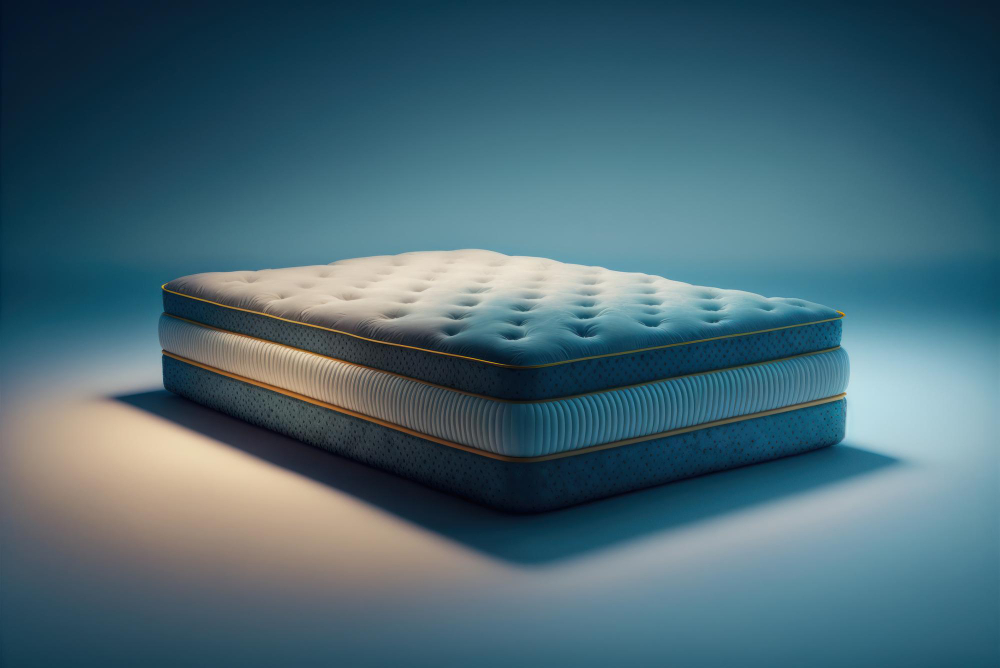Different Types of Mattresses: Mattress Types Explained
Given the extensive range of mattress choices available, determining the one that suits your unique needs can be a challenging endeavor. This comprehensive guide will explore the most commonly found mattress types, offering valuable insights to help you make an informed decision.

1. Spring Mattresses
Overview: Spring mattresses, also known as innerspring mattresses, are constructed with a core of steel coils or springs. These coils are surrounded by padding and upholstery layers.
Pros:
- Good support and durability.
- Good airflow, which helps regulate temperature.
- Wide range of firmness options.
Cons:
- Potential for motion transfer (you may feel your partner’s movements).
- Springs may wear out over time, leading to sagging.
Looking for A Reliable Mattress Disposal & Removal Service in Barrie? <<<— Click That Link
2. All Foam Mattresses
Overview: All foam mattresses are constructed entirely from various foam materials, with no innerspring coils.
Pros:
- Excellent contouring and pressure relief.
- Minimal motion transfer.
- Available in various foam types (memory foam, latex foam, polyurethane foam) for different preferences.
Cons:
- Heat retention can be an issue with some foam types.
- May lack the bouncy feel of innerspring mattresses.
3. Latex Mattresses
Overview: Latex mattresses are made from natural or synthetic latex foam. They are known for their resilience and comfort.
Pros:
- Exceptional durability.
- Natural latex is hypoallergenic and resistant to dust mites and mold.
- Provides a responsive and bouncy feel.
Cons:
- Can be relatively expensive.
- Heavy and challenging to move.
- Natural latex may trigger latex allergies in some individuals.
4. Hybrid Mattresses
Overview: Hybrid mattresses combine innerspring coils with foam or latex layers. These mattresses aim to offer the benefits of both coil support and foam comfort.
Pros:
- Balanced support and pressure relief.
- Reduced motion transfer compared to traditional innerspring mattresses.
- Suitable for various sleeping preferences.
Cons:
- Can be pricier than other types of mattresses.
- Durability and performance may vary depending on the specific hybrid design.
5. Pillow-Top Mattresses
Overview: Pillow-top mattresses have an additional layer of soft padding on the top surface. This extra layer provides added cushioning and comfort.
Pros:
- Plush and comfortable surface.
- Enhanced pressure relief, especially for side sleepers.
- Available in various firmness levels.
Cons:
- Pillow-top layers may compress over time, leading to uneven support.
- Can be more expensive than non-pillow-top alternatives.
6. Organic Mattresses
Overview: Organic mattresses are made from natural and organic materials, often free from harmful chemicals and toxins.
Pros:
- Environmentally friendly and sustainable.
- Hypoallergenic and suitable for sensitive individuals.
- May offer peace of mind for those concerned about chemical exposure.
Cons:
- Tend to be pricier than non-organic mattresses.
- Limited availability and variety in some areas.
7. Futon Mattresses
Overview: Futon mattresses are thin and typically made of cotton, foam, or a combination of materials. They are designed to be used on futon frames, which can convert from sofas to beds.
Pros:
- Space-saving and versatile.
- Budget-friendly option.
- Lightweight and easy to move.
Cons:
- Limited thickness and cushioning.
- May not provide the same level of comfort as thicker mattresses.
- Durability can vary depending on the quality of materials.
8. Waterbed Mattresses
Overview: Waterbed mattresses use water as their primary support system. They come in two main types: soft-sided and hard-sided.
Pros:
- Customizable firmness by adjusting water levels.
- Even weight distribution.
- Potential relief from pressure points.
Cons:
- Heavier than traditional mattresses.
- Requires a specialized frame and maintenance.
- May not be suitable for those who prefer a firmer surface.
Final Thoughts on The Different Types of Mattresses
Each type of mattress offers unique advantages and drawbacks, so it’s essential to consider your specific needs when making a selection. Testing mattresses in person and reading reviews can also help you make an informed choice to ensure a comfortable and restful night’s sleep.
